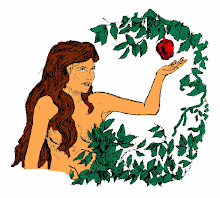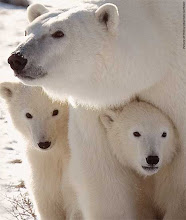In response to an interview question about global warming, Sen. McCain’s running mate Gov. Sarah Palin replied: “A changing environment will affect Alaska more than any other state, because of our location. I’m not one though who would attribute it to being man-made.” This denialist formulation is at odds with what her state’s own Alaska Climate Change Strategy web site says about attribution.
What Will Climate Change Mean to Alaska?
Climate change describes the variation in Earth’s global and regional atmosphere over time. These changes are likely caused by a combination of natural processes and activities. The rise in the Earth’s average surface temperature is known as global warming. Scientists attribute the accelerating rate of global warming to manmade greenhouse gas emissions.
Global warming is currently impacting Alaska and will continue to impact it a number of ways. These impacts include melting polar ice, the retreat of glaciers, increasing storm intensity, wildfires, coastal flooding, droughts, crop failures, loss of habitat and threatened plant and animal species.
Globally, 2005 was the warmest year on record (using records dating back to 1880) with a sustained period of warming in the arctic during 2000-2005. Convincing evidence includes NASA satellite data that shows Arctic perennial sea ice decreasing by 9% per decade since 1979. Less ice means more open water-which means greater absorption of solar energy-which leads to increased warming in the ocean, and in turn accelerates more ice loss. This has led to a wide range of impacts in Alaska, including:
• melting glaciers, rising sea levels, and flooding of coastal communities. Warming of oceans and melting of land-based ice increases the volume of ocean water. Loss of sea-ice cover changes habitat for arctic species and leaves coastal communities more exposed to larger waves generated by severe storms.
• thawing permafrost, increased storm severity, and related infrastructure damage to roads, utility infrastructure, pipelines and buildings. Extremes in weather patterns, precipitation and rising sea levels will affect safe water sources in villages, and contributes to increased erosion along Alaska coasts and rivers and undermines Alaska boreal forests.
• loss of the subsistence way of life as animal habitat and migration patterns shift and as hunting and fishing become more dangerous with changing sea and river ice. Warming streams and increased silt from melting glaciers affect fish habitat. Boreal forests advance northward and to higher elevations, displacing tundra. Invasive species compete with native vegetation. Humans, animals and plants may be exposed to new infectious diseases as habitat changes.
• forest fires and insect infestations increasing in frequency and intensity. In the past decade, Alaska has witnessed a record loss of forests to fires and spruce bark beetles.
Subscribe to:
Post Comments (Atom)


























No comments:
Post a Comment